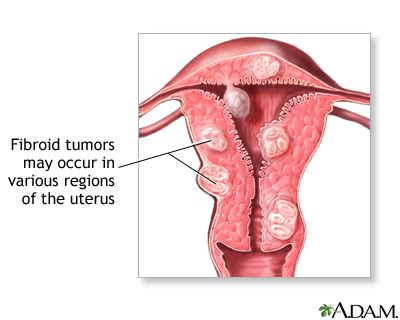
Uterine fibroid
Understanding Uterine Fibroids: Symptoms, Causes, and Treatments
Uterine fibroids are noncancerous growths that develop in the uterus. They are also known as leiomyomas or myomas. Despite their prevalence, fibroids can cause significant health issues and discomfort. Understanding their nature, symptoms, causes, and treatment options is crucial for managing this condition effectively.
What Are Uterine Fibroids?
Uterine fibroids are abnormal growths of muscle tissue and fibrous connective tissue in the uterus. They can vary greatly in size, ranging from as small as a pea to as large as a melon. While some women may have just one fibroid, others may have multiple. These growths can develop in different parts of the uterus, including:
- Submucosal Fibroids: These grow just beneath the lining of the uterus and can protrude into the uterine cavity.
- Intramural Fibroids: These are located within the muscular wall of the uterus.
- Subserosal Fibroids: These grow on the outer surface of the uterus and can expand outward.
Symptoms of Uterine Fibroids
Not all women with uterine fibroids experience symptoms, but when they do, the symptoms can be quite distressing. Common symptoms include:
- Heavy Menstrual Bleeding: Fibroids can cause excessive menstrual bleeding or prolonged periods.
- Pelvic Pain or Pressure: Large fibroids can press against other organs, causing pelvic pain or a feeling of fullness.
- Frequent Urination: Fibroids pressing against the bladder can lead to increased urination.
- Constipation: Pressure on the rectum can cause difficulty with bowel movements.
- Back Pain: In some cases, fibroids can cause lower back pain.
- Pain During Intercourse: Fibroids can lead to discomfort or pain during sexual activity.
Causes of Uterine Fibroids
The exact cause of uterine fibroids is not fully understood, but several factors may contribute to their development:
- Hormones: Estrogen and progesterone, hormones that regulate the menstrual cycle, may stimulate the growth of fibroids.
- Genetics: Women with a family history of fibroids are more likely to develop them.
- Age: Fibroids are more common in women in their 30s and 40s and tend to shrink after menopause.
- Ethnicity: African-American women are at a higher risk of developing fibroids and may experience more severe symptoms.
Diagnosing Uterine Fibroids
Diagnosing uterine fibroids typically involves a combination of medical history, physical examination, and imaging tests. Common diagnostic methods include:
- Pelvic Exam: A healthcare provider may perform a pelvic exam to feel for abnormal growths in the uterus.
- Ultrasound: An ultrasound uses sound waves to create an image of the uterus and can help determine the size and location of fibroids.
- MRI: Magnetic Resonance Imaging (MRI) provides a more detailed image of fibroids and can help plan treatment.
- Hysteroscopy: This procedure involves inserting a thin, flexible tube with a camera through the vagina and cervix into the uterus to directly view fibroids.
Treatment Options for Uterine Fibroids
Treatment for uterine fibroids depends on the size, location, and symptoms of the fibroids, as well as the patient’s overall health and reproductive goals. Treatment options include:
- Medications: Various medications can help manage symptoms, including:
- Hormonal Therapies: Birth control pills, progestin-releasing intrauterine devices (IUDs), and other hormonal treatments can help control bleeding and pain.
- GnRH Agonists: These medications can shrink fibroids by lowering estrogen levels, though they are typically used short-term due to potential side effects.
- Anti-inflammatory Drugs: Nonsteroidal anti-inflammatory drugs (NSAIDs) can help relieve pain.
- Surgical Options: For women with severe symptoms or larger fibroids, surgical options may be necessary:
- Myomectomy: This surgery involves the removal of fibroids while preserving the uterus. It can be performed through the abdomen (open myomectomy), the vagina (hysteroscopic myomectomy), or laparoscopically (minimally invasive surgery).
- Hysterectomy: This is the complete removal of the uterus and is considered a definitive treatment for fibroids. It is typically recommended for women who do not wish to retain their fertility.
- Uterine Artery Embolization (UAE): This minimally invasive procedure involves blocking the blood supply to the fibroids, causing them to shrink.
- Lifestyle and Home Remedies: Some women find relief through lifestyle changes and home remedies, such as:
- Dietary Adjustments: Eating a balanced diet rich in fruits, vegetables, and whole grains can support overall health and potentially reduce symptoms.
- Regular Exercise: Engaging in regular physical activity can help manage stress and improve overall well-being.
When to Seek Medical Advice
It is important to consult a healthcare provider if you experience symptoms of uterine fibroids, especially if they impact your quality of life or daily activities. Early diagnosis and treatment can help manage symptoms and improve your overall health.
